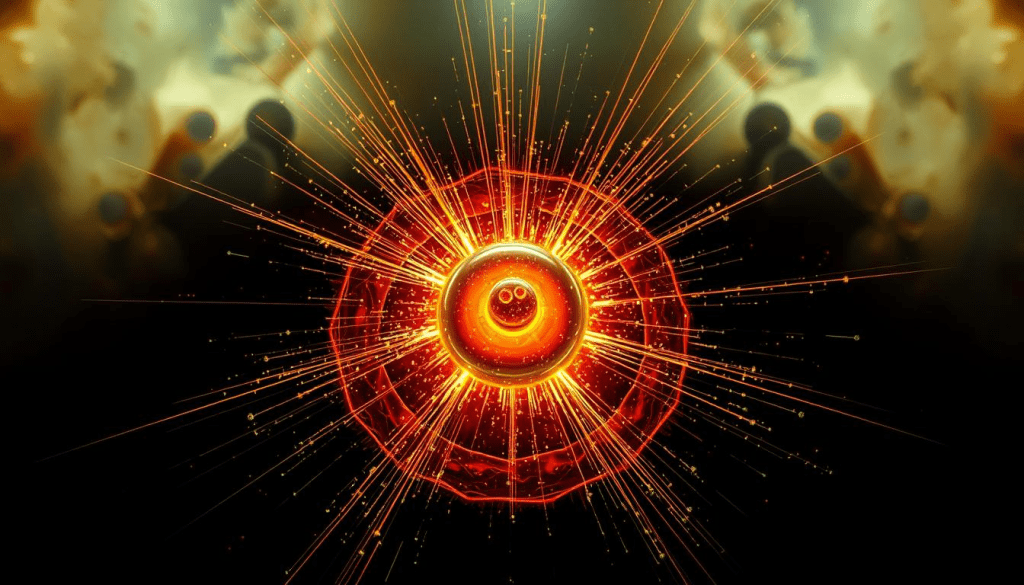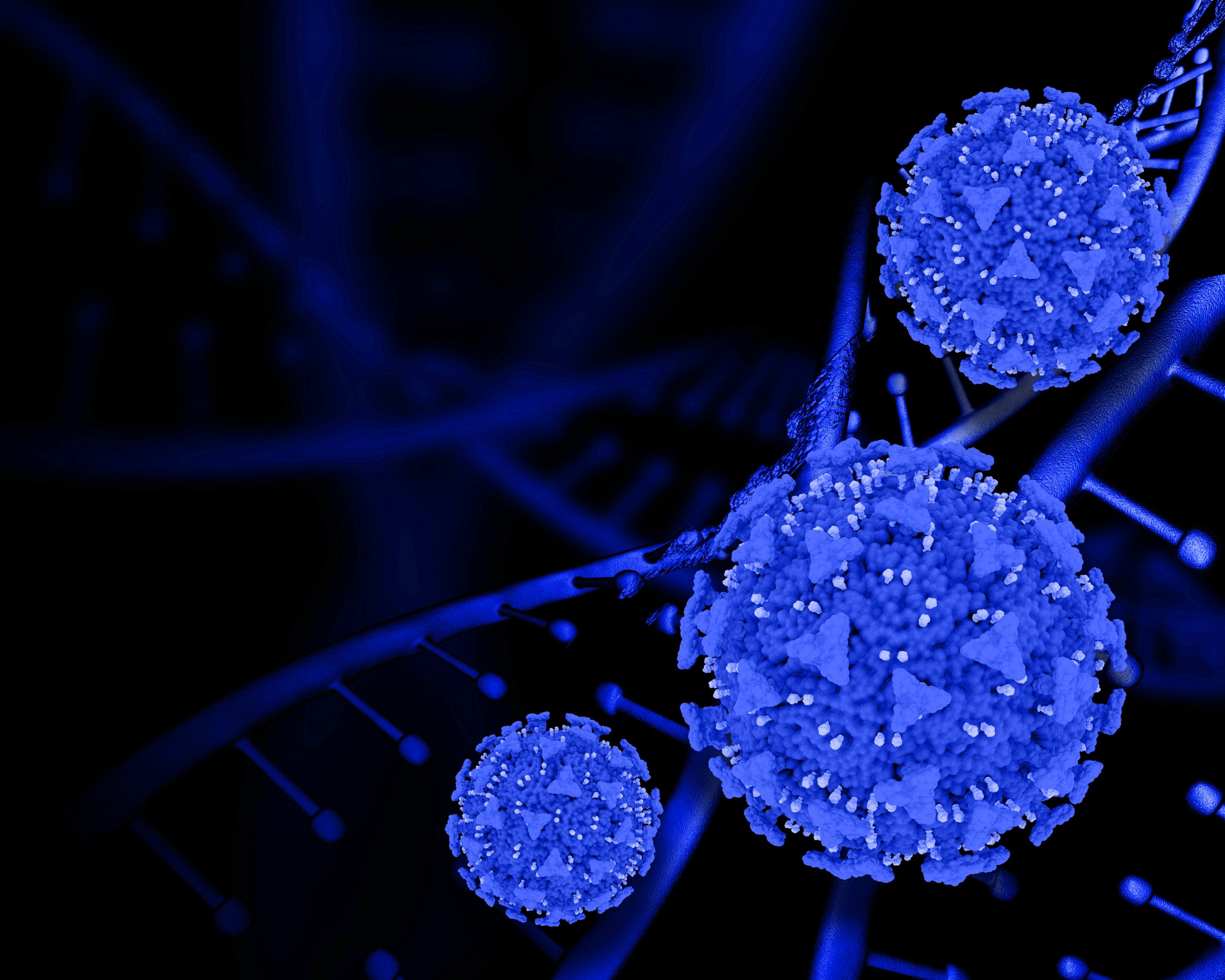Last Updated on November 27, 2025 by Bilal Hasdemir

At Liv Hospital, we know how vital radioactive decay is in medicine and science. It’s how unstable atoms lose energy by sending out decay radiation. This key idea in decay physics shows how radionuclides change through radioactive reactions.Understanding decay radiation? Learn 5 essential types of radioactive decay and the particles and energy they emit during the process.
It’s important to know the different kinds of radioactive decay to use it well in many areas.
Key Takeaways
- Radioactive decay is a process by which unstable atomic nuclei lose energy.
- There are five key types of radioactive decay.
- Understanding radioactive decay is key for its uses in medicine and science.
- Liv Hospital is dedicated to top-notch healthcare.
- Radioactive decay involves the transformation of radionuclides through radioactive reactions.
The Nature of Radioactive Decay

Unstable atomic nuclei go through radioactive decay. This process changes them into more stable forms. It’s key to understanding radioactive materials and how they act.
Atomic Instability and Nuclear Transformation
Radioactive decay happens because of atomic instability. This usually affects nuclei with 84 or more protons. The instability causes the nucleus to change into a more stable state.
This change involves the release of radiation. This radiation can be alpha, beta, or gamma. The strong nuclear force holds the nucleus together. But in unstable nuclei, it’s not enough.
So, radioactive decay helps these nuclei become stable.
When Does Radioactive Decay Occur
Radioactive decay happens in unstable nuclei. These nuclei have too many or too few neutrons compared to protons. This imbalance causes instability.
Decay is a spontaneous process. It happens on its own, without outside help. The timing of decay for each atom is random. But the decay rate of a sample is predictable based on its half-life.
Decay Radiation: Definition and Fundamental Physics

Decay radiation happens when unstable nuclei release particles or waves. This is how they become stable. We’ll look into the physics behind this, focusing on the radioactive process and energy changes.
The Radioactive Process Explained
Radioactive decay is when unstable nuclei lose energy by sending out radiation. This makes them more stable. The radiation can be alpha, beta, or gamma, each with its own features.
Alpha decay sends out helium nuclei, while beta decay releases electrons or positrons. Gamma decay emits high-energy photons.
The process is random and can’t be predicted. But, we can guess the decay rate of many atoms. This helps us understand half-life, the time it takes for half of the atoms to decay.
Energy Release During Radionuclide Decay
When a nucleus decays, it releases energy. This happens because the new nucleus has less binding energy. The energy difference is what we see as radiation.
This energy is used in many ways, like in nuclear power and medicine. For example, some radionuclides help kill cancer cells. It’s also used in industries for things like radiography and sterilization.
Key aspects of energy release during radionuclide decay include:
- The difference in nuclear binding energy between the parent and daughter nuclei.
- The type of radiation emitted, which depends on the mode of decay.
- The energy spectrum of the emitted radiation, which can be characteristic of the decaying nucleus.
Understanding how energy is released during decay is key. It helps us use this energy safely and effectively in many fields.
Alpha Decay: Helium Nuclei Emission
In alpha decay, unstable nuclei release high-energy helium nuclei to achieve stability. This process involves the emission of alpha particles. These are high-energy helium nuclei made of two protons and two neutrons.
Mechanism and Properties of Alpha Particles
Alpha particles are emitted from the nucleus of an atom during alpha decay. They have a positive charge due to two protons. They also have a large mass compared to other forms of radiation.
The energy released during alpha decay is significant. The particles are ejected with high velocities.
The properties of alpha particles include:
- High ionizing power: Alpha particles can cause significant damage to living tissues by ionizing atoms and molecules.
- Low penetration power: Due to their large mass and charge, alpha particles are stopped quickly by materials, including air and human skin.
- High energy: Alpha particles are emitted with high energies, typically in the range of a few MeV.
Penetration Power and Biological Effects
Despite their low penetration power, alpha particles can be highly damaging if they are emitted inside the body. When alpha-emitting isotopes are ingested or inhaled, they can cause significant harm to internal organs. The high ionizing power of alpha particles means they can damage DNA and other cellular structures, leading to cell death or mutations.
The biological effects of alpha particles include:
- Damage to lung tissue if inhaled.
- Cancer risk due to DNA damage.
- Damage to the gastrointestinal tract if ingested.
Common Alpha-Emitting Isotopes
Several isotopes are known to undergo alpha decay. Some of the most common include:
- Uranium-238: A naturally occurring isotope that undergoes alpha decay.
- Radium-226: Another naturally occurring isotope that is a product of uranium decay.
- Plutonium-239: A man-made isotope used in nuclear reactors and weapons.
- Radon-222: A gas that is a product of radium decay and can accumulate in buildings.
Understanding alpha decay and its effects is key for safely handling and managing radioactive materials.
Beta Decay: Electron and Positron Emission
Beta decay is when an atomic nucleus releases beta particles. These can be electrons or positrons. This change makes the nucleus more stable.
Neutron to Proton Conversion
In beta-minus decay, a neutron turns into a proton, an electron, and a neutrino. The electron is released as beta radiation. This increases the atomic number by one, moving the element up in the periodic table.
For example, carbon-14 turns into nitrogen-14 through this process. It’s key in radioactive dating.
Proton to Neutron Conversion
Beta-plus decay changes a proton into a neutron, a positron, and a neutrino. The positron is released as beta radiation. This lowers the atomic number by one, moving the element down in the periodic table.
Nitrogen-13 turns into carbon-13 through this decay. It’s vital in medical imaging, like PET scans.
An Alternative Process: Electron Capture
Electron capture is another way a proton-rich nucleus changes. It captures an electron from the inner shell, turning a proton into a neutron. This also lowers the atomic number by one.
This process is seen when beta-plus decay isn’t possible. It’s important in some radioactive decay chains.
Key traits of beta decay include:
- Beta Particles: Can be either electrons (beta-minus) or positrons (beta-plus).
- Penetration Power: Beta particles can go through a few millimeters of metal. They have more power than alpha particles.
- Biological Effects: Beta radiation can harm living tissues. It’s a big concern in keeping people safe from radiation.
Gamma Decay: High-Energy Photon Emission
Gamma rays are emitted when a nucleus loses energy. This happens after alpha or beta decay. It’s key to understanding nuclear reactions and has many uses.
Nuclear Excitation and De-excitation
Nuclei get excited through radioactive decay or reactions. They then release this energy to become stable again. Gamma decay is how they do this, sending out gamma rays.
Gamma decay often follows alpha or beta decay. It’s like how atoms release energy when electrons move. But it’s on a much bigger scale.
Properties and Penetration Capabilities
Gamma rays are high-energy, with no mass or charge. They can go through many materials. But dense ones like lead or thick concrete can stop them.
Key Properties of Gamma Radiation:
| Property | Description |
| Energy Range | Typically from a few keV to several MeV |
| Penetration Power | High; can pass through several centimeters of lead or meters of concrete |
| Ionizing Ability | High; can cause significant ionization in materials |
Gamma Radiation in Medicine and Industry
Gamma rays are used in many ways. In medicine, they help kill cancer cells in radiotherapy. In industry, they sterilize medical tools and food, and help in testing without damage.
They’re also used in PET scans. These scans use gamma rays to see inside the body. This helps doctors understand what’s happening inside.
Gamma radiation is very useful in many fields. Knowing about gamma decay helps us use it safely and effectively.
Less Common Modes of Radioactive Decay
Alpha, beta, and gamma decay are well-known. But, other less common types of radioactive decay give us more insight into nuclear processes. These rare modes are key to fully understanding nuclear physics.
Spontaneous Fission in Heavy Elements
Spontaneous fission happens when a heavy nucleus splits into smaller parts without being hit by anything. This is important for very heavy elements like uranium and plutonium. Spontaneous fission adds to the background radiation and affects nuclear reactor design and waste management.
As physicist
“The discovery of spontaneous fission opened new avenues in nuclear physics, revealing the complex nature of heavy nuclei.”
This shows how unstable some heavy nuclei are. It also shows how random radioactive decay can be.
Neutron Emission Processes
Neutron emission is when an excited nucleus lets out one or more neutrons. This happens when a nucleus has too many neutrons or is very excited. Neutron emission is key in nuclear reactions and is used in nuclear medicine and research reactors.
- Neutron emission can happen on its own or be caused by outside radiation.
- It’s important in nuclear reactors, helping the chain reaction.
- Studying neutron emission has helped us understand nuclear structure better.
Cluster Decay and Other Exotic Modes
Cluster decay is when a nucleus sends out a group of nucleons, bigger than an alpha particle but smaller than a fission fragment. This rare event is seen in some heavy nuclei. It’s an exotic mode of decay that challenges our understanding of nuclear forces and stability.
Other rare decays, like double beta decay, have also been studied. These rare processes give us valuable insights into nuclei and the forces that control them.
Measuring and Predicting Radioactive Decay
Measuring and predicting radioactive decay is key for many uses. This includes nuclear medicine and environmental monitoring. Knowing how fast radioactive materials decay is vital for safe handling and use.
The Time for Radioactive Decay: Half-Life Concept
The half-life of a radionuclide shows how fast it decays. It’s the time it takes for half of the atoms to decay. This idea is key in nuclear physics because it tells us how long a substance stays dangerous.
Key aspects of half-life include:
- It is a constant for each radionuclide.
- It is unaffected by external factors such as temperature or pressure.
- It allows for the prediction of the decay rate over time.
Activity Units and Measurement Techniques
Radioactive decay is measured by activity, which is decays per unit time. The Becquerel (Bq) is the standard unit, where 1 Bq is one decay per second.
Common measurement techniques include:
- Geiger-Müller counters for detecting radiation.
- Scintillation detectors for measuring gamma radiation.
- Solid-state detectors for precise measurement of radiation energy.
Decay Chains and Secular Equilibrium
A decay chain happens when a radioactive decay product is also radioactive. This leads to a series of decays until a stable nuclide is reached. Secular equilibrium is when the decay rate of the parent nuclide equals the decay rate of its daughter products.
Understanding decay chains and secular equilibrium is important for:
- Predicting the long-term behavior of radioactive materials.
- Managing nuclear waste.
- Assessing environmental impact.
Isotopes and Radioactive Decay in Modern Applications
Radioactive isotopes are key in many areas, changing how we find and treat diseases. They help in medical treatments, industrial processes, and scientific studies.
Medical Diagnostics and Treatments
In medicine, isotopes help in both finding and treating diseases. Technetium-99m is used in imaging because of its good gamma radiation and short life. Iodine-131 treats thyroid issues by targeting specific areas.
Isotopes have made cancer treatment better. Targeted alpha therapy kills cancer cells with less harm to healthy tissue. This method is showing great results in fighting cancer.
Industrial and Energy Applications
In industry, isotopes are used in gauges and radiography for checking materials and welds. They also help in sterilizing and irradiating food.
Nuclear power plants use Uranium-235 to make electricity. This process is clean and helps reduce our use of fossil fuels.
Scientific Research and Archaeological Dating
In science, isotopes are essential for tracing and dating. Radiocarbon dating helps us understand history and culture.
Isotopes also help in studying the environment. They track water and pollutants, giving us insights into ecosystems.
Isotopes and radioactive decay help us move forward in medicine, industry, and science. Their importance shows how vital they are in today’s world.
Conclusion: The Enduring Significance of Decay Radiation
Understanding decay radiation is key for many fields. This includes medical diagnostics, treatments, and industrial uses. We’ve looked at different types of decay, like alpha, beta, and gamma, and their importance.
Decay radiation is vital in medicine, helping with cancer treatments and imaging. It’s also used in industries for sterilization and food irradiation. Plus, it’s a part of nuclear power generation.
The study of decay radiation keeps growing, leading to new discoveries. This research improves our lives. It’s important to keep learning about radioactive decay for safe use.
At Liv Hospital, we aim to provide top-notch healthcare. We support patients from around the world. Our knowledge of decay radiation helps us offer advanced medical care.
FAQ
What is radioactive decay?
Radioactive decay happens when unstable atomic nuclei change. They release radiation and become more stable.
What is decay radiation?
Decay radiation is energy from unstable atomic nuclei. It can be particles or electromagnetic waves.
What are the main types of radioactive decay?
Main types include alpha, beta (minus and plus), and gamma decay. Less common are spontaneous fission, neutron emission, and cluster decay.
What is alpha decay?
Alpha decay is when a nucleus loses an alpha particle. An alpha particle is a helium nucleus with two protons and two neutrons.
How does beta decay occur?
Beta decay changes a neutron into a proton (beta-minus) or vice versa (beta-plus). This results in an electron or positron being emitted.
What is gamma decay?
Gamma decay happens when a nucleus releases energy as gamma rays. This helps it reach a lower energy state.
What is the half-life of a radioactive isotope?
The half-life is the time for half of a sample’s atoms to decay. It’s unique to each radionuclide.
How is radioactive decay measured?
Decay is measured with tools like Geiger counters and scintillation detectors. They show the activity in units like becquerels or curies.
What are the applications of radioactive isotopes?
Isotopes are used in medicine, industry, energy, research, and archaeology. They help with diagnostics, treatments, monitoring, sterilization, and dating.
Why is understanding radioactive decay important?
Knowing about decay is key for safe use of radioactive materials. It also helps in research and development across many fields.
References:
- Nakatani, M., et al. (2022). Radiation Exposure and Protection in Computed Tomography Fluoroscopy-Guided Procedures. Cureus, 14(6), e25633. https://pmc.ncbi.nlm.nih.gov/articles/PMC9527104/
- Frane, N., & Mohiuddin, M. M. (2023). Radiation Safety and Protection. StatPearls (NCBI Bookshelf). https://www.ncbi.nlm.nih.gov/books/NBK557499/
- Centers for Disease Control and Prevention. (2024). Guidelines for ALARA “ As Low As Reasonably Achievable. https://www.cdc.gov/radiation-health/safety/alara.html






